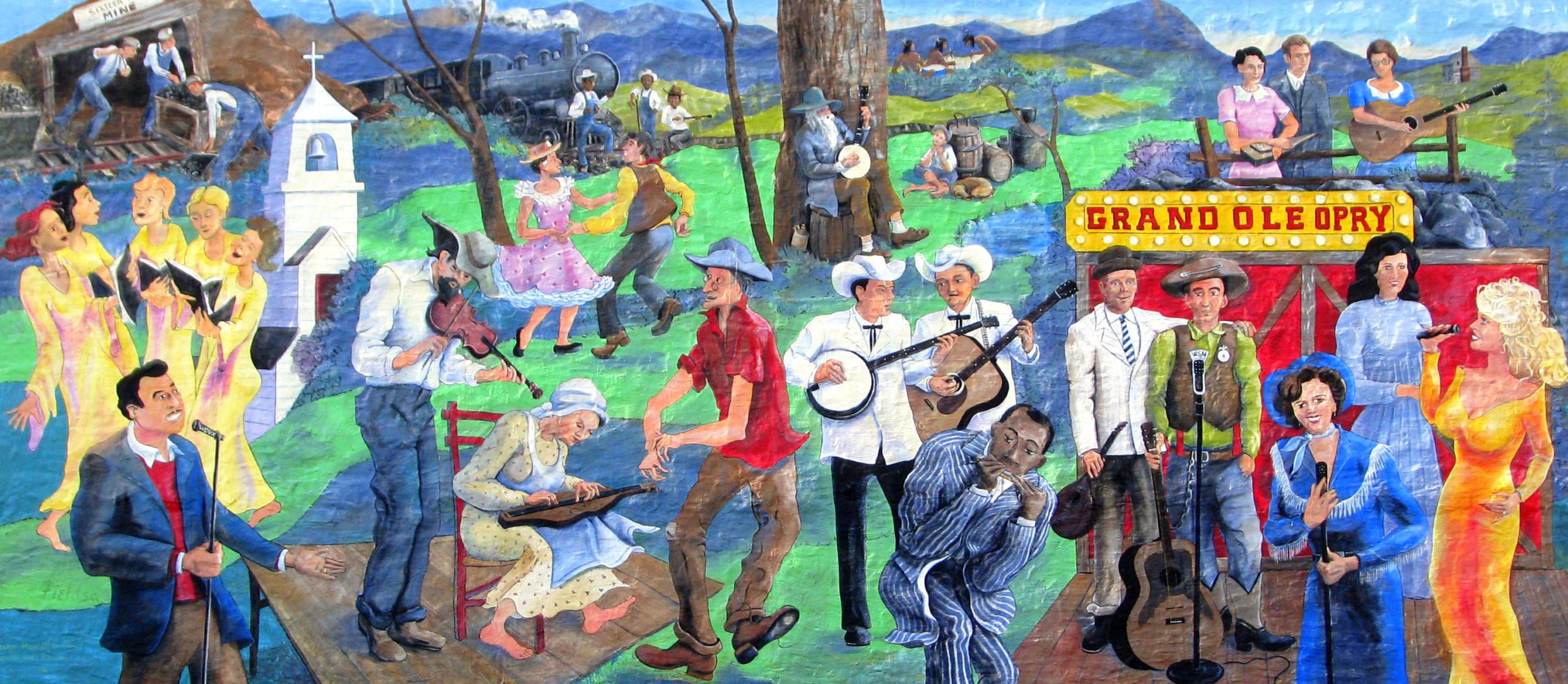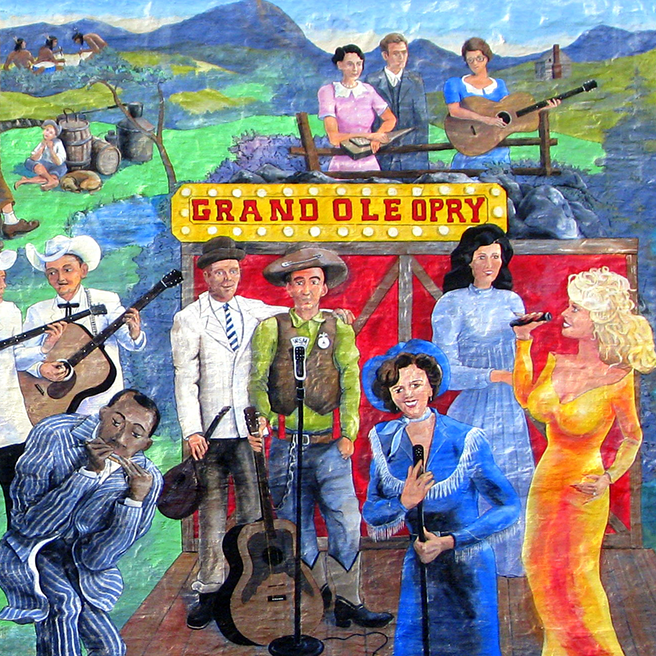Battle of the Bulge
Called “the greatest American battle of the war” by Winston Churchill, the Battle of the Bulge in the Ardennes region of Belgium was Adolf Hitler’s last major offensive in World War II against the Western Front. Blount County’s memorial to all the brave men why fought there is located in front of the Blount County Courthouse.
Blount County War Dead Memorial
In front of the Blount County Courthouse on Court St is a memorial to those from Blount County who have died at war. Beginning with the War of 1812 to present day, the names of those who have made the ultimate sacrifice are listed. This monument is dedicated to all those gallant heroes of Blount County, living and dead, who have fought in all wars to preserve the American way of life.
Fort Craig Springs
When walking along the Greenbelt, you may stumble across a marker for Fort Craig Springs. The springs provided water for the first settlers of the area. The fort, located on Washington Street just outside Downtown Maryville, was built by Revolutionary War veteran John Craig in 1785 to protect early Blount County settlers from sporadic Cherokee attacks. Craig donated the initial 50 acres for the construction of Maryville’s first town square.
Freedman’s Institute
A three-story brick building was erected 1872-74 on the current site of Maryville High School’s campus to train blacks as teachers. The Freedman’s Institute was begun in 1867, in a log house ½ mile north, and later moved into a new building, financed mainly by friends. By 1879, it had trained 80 teachers. After closing in 1901, it served as a place of quarantine for smallpox victims, as Maryville Polytechnic (1904-26), and as Maryville High School (1927–38).
The Glascock House
Built in 1910 at the intersection of West Broadway Avenue and South Cedar Street is The Glascock House. Built by W.P. (Pete) Hood, this residence was built with Craftsman detailing and extensive use of oak and chestnut paneling and decoration occurred on the interior. Hood also constructed a two-story servant’s quarters at the rear and a two-story brick water tower. This water tower is of Flemish bond construction and is the only example of its type in the city. Hood was an official with the Knoxville and Augusta Railroad and lived in the house until 1916 when it was sold to Ben Glascock, a manager at the Alcoa plant. The property remained in the hands of the Glascock family until 2020.
Revolutionary War
Also located by the Court House is the Blount County Revolutionary War Memorial. In memory of soldiers and patriots of the American Revolution who settled in Blount County, this stone marker lists each name who fought for our independence.
Sam Houston Statue
In 2016 at the intersection of West Broadway Avenue and West Lamar Alexander Parkway, The City of Maryville unveiled a statue of Houston, the only man to govern two states during his 19th Century lifetime, in front of its municipal building. The statue includes four plaques describing his legacy of leadership, his time as a soldier, life on the frontier, and his pride of Blount County. There is also a marker for General Sam Houston on Court Street just south of Ellis Avenue.
Sam Houston Enlisted
There is a marker at the intersection of Broadway and Cusick marking the spot where Sam Houston enlisted. Blount County’s first courthouse stood on the location, and Houston ‘took a dollar from the drum” on Marcy 24, 1813, thus marking his first enlistment in the United States Army.
Relief of Knoxville
On December 5, 1863, Maj. Gen. W. T. Sherman, U.S.A., arrived in Blount County with 25,000 men to relieve Gen. Ambrose Burnside besieged at Knoxville by Gen. James Longstreet. The 15th Corps camped around Maryville, the 11th around Louisville and the 4th s.w. toward Morgantown. This camp is noted with a Relief of Knoxville marker in front of the Maryville Municipal building.
Pride Mansion
Adjacent to the Sam Houston Statue is the Pride Mansion marker. Dr. Samuel Pride, first Worthy Master of the New Providence Masonic Lodge, built his house here. Maj. Gen. W. T. Sherman, on his way to the relief of Burnside at Knoxville, billeted himself here. From 1878 to 1900 it was the Friends’ Normal Institute. In 1900 it became the Maryville Public School and was replaced by West Side School in 1910. The building was razed in 1955.
New Providence Church
This Presbyterian church was founded in 1786 by Rev. Archibald Scott of Virginia. In 1792, Rev. Gideon Blackburn built a log church at the intersection of what is now West Broadway and Cates Street. The stones in the present wall are from a church which replaced it in 1829; the brick church, now St. Andrew’s, replaced it in 1858. In its adjacent cemetery, which was closed to burials in 1905, are over 20 known veterans of the Revolution and War of 1812.
Civil War History
Erected by the Civil War Trails, a marker depicting Maryville during the Civil War can be viewed along the Greenway in Bicentennial Greenbelt Park. The marker can be reached from the intersection of McCammon Avenue and McGhee Street.
Maryville College
Maryville College was founded in 1819 by the Synod of Tennessee, Presbyterian Church in the USA, as The Southern and Western Theological Seminary. Its first president was Rev. Isaac Anderson, D.D., and its original buildings were on Broadway at College Street. Receiving its present name in 1842, it was moved to its present location in 1871. The college is one of the 50 oldest colleges in the United States and the 12th-oldest institution in the South. Enrolling about 1,100 students, its mascot is the Scots, and sports teams compete in NCAA Division III athletics.
Louis Phillippe
Louis Philippe, Duke of Orleans and later king of France, lived in exile in the United States in 1797. Following a route designed by President George Washington he toured the South in that year. On April 29 he spent the night here at Woods Tavern, operated by William Burke, while en route to Tellico Blockhouse to observe Cherokee Life. The site is marked on Broadway in front of Roost.









